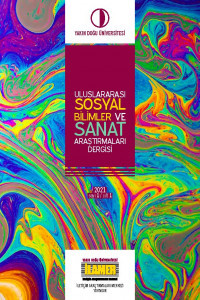BİR İKTİDAR VE ÖZGÜRLÜK ALDATMACASI
Pre-Code, MPPDA, Yapım Yönetmeliği, Düşmüş Kadın Filmleri, Will Hays.
A Deception of Power and Freedom
Pre-Code, MPPDA, Production Code, Fallen Woman Films, Will Hays.,
___
- Bade, P. (1979). Femme Fatale: Images of Evil and Fascinating Women. New York: Mayflower Books.
- Balio, T. (1995). Grand Design – Hollywood as a Modern Enterprise, 1930-1939. Los Angeles: University of California Press.
- Black, G. D. (1996). Hollywood Censored – Morality Codes, Catholics, and the Movies. New York: Cambridge University Press.
- Butters, G. R. (2007). Banned in Kansas: Motion Picture Censorship. Missouri: University of Missouri Press.
- Doherty, T. (1999). Pre-code Hollywood : Sex, Immorality, and Insurrection in American Cinema, 1930 –1934. New York: Columbia University Press.
- Doherty, T. (2007). Hollywood’s Censor – Joseph I. Breen & the Production Code Administration. New York: Columbia University Press.
- Forman, H. J. (1935). Our Movie Made Children (8. Baskı). New York: Macmillan Company.
- Hamilton, M. (2006), Goodness Had Nothing to Do with It. F. G. Couvares (Ed.), Movie Censorship and American Culture (187-211). Boston: University of Massachusetts Press.
- Haskell, M. (1973). From Reverence to Rape. Chicago: University of Chicago Press.
- Jacobs, L. (1997). The Wages of Sin. Berkeley: University of California Press.
- Jowett, G. (1976). Film, the Democratic Art. Londra: Focal Press.
- Knight, A. (1957). The Liveliest Art. New York: The New American Library.
- LaSalle, M. (2000). Complicated Women – Sex and Power in Pre-Code Hollywood. New York: Thomas Dunne Books.
- LaSalle, M. (2002). Dangerous Man – Pre-Code Hollywood and the Birth of the Modern Man. New York: Thomas Dunne Books.
- Leff , L. J., Simmons, J. L. (2001) The Dame in the Kimono, Kentucky: The University Press of Kentucky.
- Malone, A. (2011). Censoring Hollywood: Sex and Violence in film and on the Cutting Room Floor. Jefferson: Mcfarland.
- Maltby, R. (1995). The Production Code and The Hays Office. T. Balio (Ed) Grand Design – Hollywood As A Modern Business Enterprise, 1930-1939 (s. 37-73). Los Angeles: University of California Press. Moley, R. (1945). The Hays Office. New York: The Cornwall Press.
- Onat, E. S. (2012). Amerikan Film Sansür Yasası Olarak Yapım Yönetmeliği’nin Doğuşu ve 1948 Yılına Kadar Kara Film Üzerindeki Etkisi (Yayınlanmamış Doktora Tezi). Güzel Sanatlar Enstitüsü (DEÜ), İzmir.
- Onat, E. S. (2019). Hays Yasaları (Yapım Yönetmeliği) – Kilise-Hollywood Savaşı ve Amerikan Sansür Yönetmeliği, SineMasal “Zihniyet”. İstanbul: Doğu Batı Yayınları.
- Pryor, T. M. (Aralık, 1965). Joe Breen, Sire of Code Ratings Dies, Variety, 2.
- Robinson, D. (1968). Hollywood in the Twenties. İngiltere: Page & Thomas Ltd.
- Shindler, C. (2005). Hollywood in Crisis. New York: Routledge.
- Siegel, S. ve Siegel, B. (2004). The Encyclopedia of Hollywood (2. Baskı). New York: Facts on File.
- Sklar, R. (1975). Movie Made America. New York: Vintage Books.
- Staiger, J. (2010). Les Belles Dames sans Merci, Femmes Fatales, Vampires, Vamps, and Gold Diggers: The Transformation and Narrative Value of Aggressive Fallen Women. V. Callahan (Ed). Reclaiming the Archive: Feminism and Film History (s. 32-57). Detroit: Wayne State University Press.
- Quigley, M. (1937). Decency in Motion Pictures. New York: The Macmillian Publishers.
- Walsh, A. (1986). Women’s Films and Female Experience, New York: Praeger.
- Walsh, F. (1996). Sin and Censorship. Yale University Press.
- Başlangıç: 2022
- Yayıncı: Yakın Doğu Üniversitesi
Sinema ve Televizyonda Yeni Bir Kadın Hareketi; Arabeskin Âşık Kadınları
Fevzi KASAP, Çağdaş ÖĞÜÇ, Ahmet GÜNEYLİ
Kıbrıs Türk Düğün Kültürü ve Gelin Onarıcılar Üzerine Bir İnceleme
Yeşim ÜSTÜN AKSOY, Şevket ÖZNUR, Dilan ÇİFTÇİ
Müze ve Galeri Eğitimine Yönelik Görsel İletişim Tasarımı Bölümü Öğrenci Görüşlerinin İncelenmesi
SÜPER KAHRAMANLARIN YAŞAMA MEKANLARI: BATMAN EVLERİNİN DÖNÜŞÜMÜ
MODERN TOPLUM VE ŞİDDET İLİŞKİSİ: TESADÜFİ BİR KRONOLOJİNİN 71 PARÇASI FİLMİNİN SOSYOLOJİK OKUMASI
STİLİZE BİR ÜTOPYANIN İNŞASI: AMERİKAN BİLİM KURGU SİNEMASINDA AFROFÜTÜRİZM
